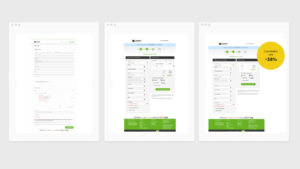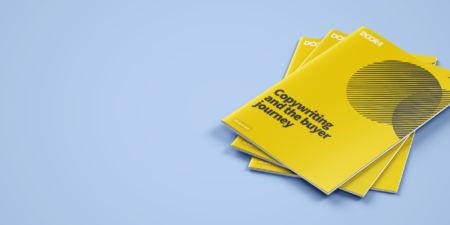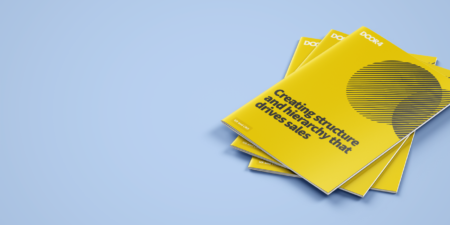
Enhancing functionality without busting the budget
Each time you make a subjective assumption of what will enhance your conversions, you risk derailing progress and losing money. UX testing is the only way to safeguard capital investment on website development – and it gets better results.
Testing safeguards investment and future profit.
Continually optimising a website so it continues to increase profits is a necessary cost to any business that wants to grow. Customer needs change, trends change, the marketplace evolves quickly. Change is the only constant.
The way to increase conversions, order values and customer loyalty is to give customers what they want and need. The best way to do this is to aesthetic, copy and structure conventions and use the data to refine web elements and meet these wants and needs.
This principle can be applied to your web development budget when you need to refine or introduce functionality. User experience (UX) testing can take control and optimise your budget. Basically, UX stops you wasting money and gets better results.
How much are you wasting on untested web dev?
- Do you want to improve your checkout experience and stop abandoned carts?
- Do you think a sleek web tool would encourage more conversions?
- Do you believe industry trend X, Y or Z is needed on your site?
Good ideas get launched all the time. Marketing and digital teams have a great understanding of their demographic and who hasn’t got an eye on the brilliant web tool that the competition just launched?
The problem is that these ideas haven’t been researched thoroughly enough and that it’s nigh-on impossible to test them until they’re built. So, if you’ve spent £20k on a good idea, there’s a possibility that you’re going to have to spend more tweaking it so it starts producing the results you want.
If you fall into the trap of making assumptions about what your demographic wants, here’s the rub: anything based on what’s ‘cool’ or ‘done by a competitor’ could be wrong.
If you fall into the trap of making assumptions about what your demographic wants, here’s the rub: anything based on what’s “cool” or “done by a competitor” could be wrong. Making subjective changes might see your budget balloon. And we know the introduction of new functionality that has been completely written off, when in fact testing could have saved the investment.
UX testing means that you can clearly see what will work and what will not. UX testing means you only need to make the tweaks and changes you know will work, reining in your spend and getting better results, more quickly.
How to commission a good idea
A solid research phase is essential. While we can’t test the full scope of functionality, there are tests we can run to collect data that will prove the concept and inform the build. This means, as far as assumption goes, you’ll be starting from a reasonable position – UX testing introduces objectivity to your subjectivity.
- Ideate with web development agency
- Research (market research, consumer data available, competitor research)
- Agree an informed plan with web development agency
- Build
- Test (it works)
- Go live
How to refine a good idea without the budget ballooning
1. UX testing
After go live, you can implement a programme of UX testing. Ideas for this will have been conceived at the ideation and build stage of your project, and the research stage will have informed it too.
Some of the testing will challenge convention – what you think you know about your demographic; what you think you know about your sector. And the tests deliver solid data on exactly what your customers want/need and respond to.
UX testing introduces objectivity to your subjectivity.
2. CRO
When the data is statistically significant enough to prove a tweak or change will have a positive impact to functionality, these can be applied globally.

A control and 2 variants, testing micro copy that encourages more conversions.

A control and 2 variants, testing subtle design elements. It’s impossible to predict what your target audience will respond to and sometimes the uplift in conversions is astounding.
Summary of the benefits of UX testing and CRO
- UX introduces objectivity to your subjectivity – the System 1/System 2 trap.
- The data brings budgets under control and fosters profit more quickly than guesswork.
- Testing allows you to build on your investment and eliminate budget waste.
- We can test different iterations and see what works best to max the conversions.
- Testing at the research phase is cost effective because you’re making front end changes for the user but not investing in the back end stuff until it’s been proven.
- Functionality projects that are failing don’t necessarily have to be scrapped.
- What you learn about your customers can filter through the rest of your marketing and communications.
Ready for more?
This is one in a series of articles about UX and consumer psychology – browse the other titles on the main page or head over to discover more about conversion optimisation.
Get started
The way your customers think affects your bottom line. You can avoid wasting time, money and effort on things that don’t work by using UX testing. This will tell you what your customers want/need from your website. Let’s talk it over – book a situational analysis to:
- BENCHMARK where you are
- EVALUATE what is required to achieve your commercial goals
- Outline the PLAN of action to get you on track.
-
 14.12.2021|The human brain is impulsive and favours speedy decisions, but it’s also highly emotional and loves a good story. Identifying the right words means tapping into the driving motivations at each point in their journey.
14.12.2021|The human brain is impulsive and favours speedy decisions, but it’s also highly emotional and loves a good story. Identifying the right words means tapping into the driving motivations at each point in their journey. -
 14.12.2021|Your customers want information fast. If the design of your website is confusing, they’ll go somewhere else. Creating instant clarity supports the human preference for instinctive decision-making and makes the sale.
14.12.2021|Your customers want information fast. If the design of your website is confusing, they’ll go somewhere else. Creating instant clarity supports the human preference for instinctive decision-making and makes the sale. -
 14.12.2021|Structure and hierarchy drive the buyer journey from awareness to conversion. The human brain wants a fast experience, or one that feels fast. If the look and feel of your website is getting in their way, they’ll bounce somewhere else to spend their money.
14.12.2021|Structure and hierarchy drive the buyer journey from awareness to conversion. The human brain wants a fast experience, or one that feels fast. If the look and feel of your website is getting in their way, they’ll bounce somewhere else to spend their money.
Scrapbook
We have a lot to talk about.Door4 opinions and insight - exploring performance marketing, communications and optimisation.













